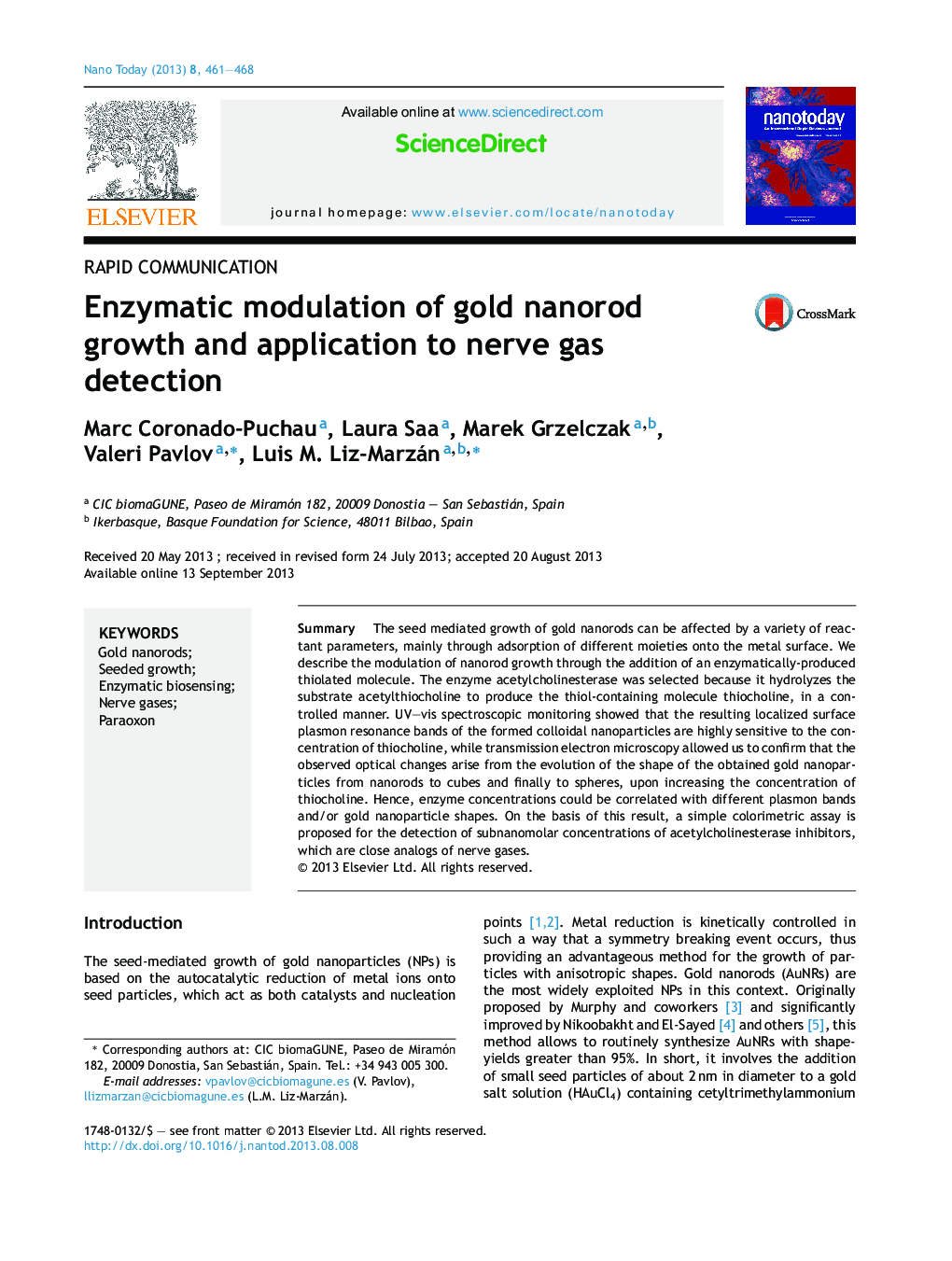| Article ID | Journal | Published Year | Pages | File Type |
|---|---|---|---|---|
| 32389 | Nano Today | 2013 | 8 Pages |
•Enzymatically-produced thiocholine modulates the seeded growth of gold nanorods.•Acetylcholinesterase activity can be correlated with different nanoparticle shapes.•Subnanomolar detection of paraoxon and other nerve gas analogs is achieved.
SummaryThe seed mediated growth of gold nanorods can be affected by a variety of reactant parameters, mainly through adsorption of different moieties onto the metal surface. We describe the modulation of nanorod growth through the addition of an enzymatically-produced thiolated molecule. The enzyme acetylcholinesterase was selected because it hydrolyzes the substrate acetylthiocholine to produce the thiol-containing molecule thiocholine, in a controlled manner. UV–vis spectroscopic monitoring showed that the resulting localized surface plasmon resonance bands of the formed colloidal nanoparticles are highly sensitive to the concentration of thiocholine, while transmission electron microscopy allowed us to confirm that the observed optical changes arise from the evolution of the shape of the obtained gold nanoparticles from nanorods to cubes and finally to spheres, upon increasing the concentration of thiocholine. Hence, enzyme concentrations could be correlated with different plasmon bands and/or gold nanoparticle shapes. On the basis of this result, a simple colorimetric assay is proposed for the detection of subnanomolar concentrations of acetylcholinesterase inhibitors, which are close analogs of nerve gases.
Graphical abstractFigure optionsDownload full-size imageDownload high-quality image (159 K)Download as PowerPoint slide
